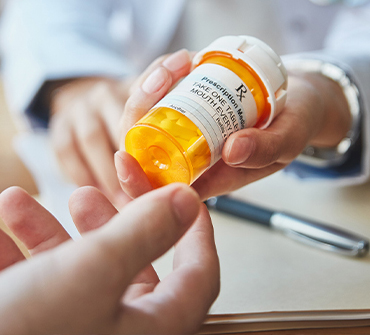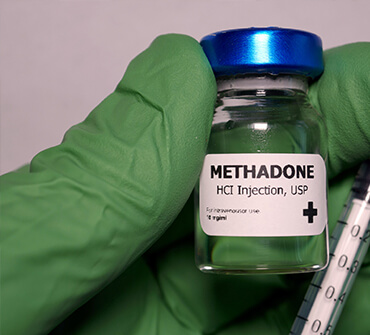Medication-Assisted
Treatment
Get Help Overcoming Addiction
Medication-Assisted Treatment (MAT) is the standard treatment for opioid use disorder as the chances of success are for greater than detox or counseling alone strategies and includes the use of medications, along with counseling and other supports, to treat addiction.
Treatment that includes medication is often the most successful choice for opioid addiction. For a person who is addicted, medication allows for a regained state of mind free of drug-induced highs and lows. It can reduce cravings and withdrawals. These benefits can give a person a better chance of making lifestyle changes that lead back to healthy living.
There are three primary medications used for MAT:

Those receiving Medication Assisted Treatment and other supports such as counseling, are more likely to be opioid free six months after starting treatment, and half as likely to die of an overdose.
Buprenorphine
(Suboxone, Subutex, Zubsolv, Sublocade)
Buprenorphine works by attaching to opioid receptor sites to block the effects of opioids. At the same time, it slightly activates these sites, preventing cravings and withdrawal. Buprenorphine allows the opioid receptors in the brain to rest, so people can begin to respond to the everyday pleasures they used to enjoy.

Methadone
(Dolophine, Methadose)

Naltrexone
(Vivitrol)

Frequently Asked Questions About Medication Assisted Treatment
How long will I have to stay on Methadone or Suboxone?
There is no set rule for how long someone should stay on MAT. However, it is well known that the longer a patient remains in treatment, the better the outcome.
The American Society of Addiction Medicine recommends staying on buprenorphine for at least 1-2 years, after which voluntary, slow tapers can be attempted. People early in their disease can successfully taper off. If cravings return, it’s a sign that the taper was too soon.
People with long-term opioid use may have permanent brain chemistry changes and require long-term treatment with MAT. Lifelong treatment is acceptable for other chronic diseases such as diabetes, HIV or high blood pressure. Addiction is a chronic brain disease that requires a similar approach. MAT has about the same success rate as that for other chronic diseases. Many people go on to reestablish, productive, satisfying lives.
Isn’t this just trading one addiction for another?
Taking medication for opioid addiction is like taking medication to control heart disease or diabetes. It is NOT the same as substituting one addictive drug for another. Used properly, the medication does NOT create a new addiction.
It is important to remember that there is a difference between drug dependence and addiction.
Methadone and buprenorphine cause physical dependence (meaning withdrawal symptoms will occur if the drugs are abruptly stopped), but when used under medical supervision for opioid use disorder, they do not cause addiction, which has psychological components. Since controlled use of buprenorphine eliminates craving and withdrawal, it allows a person to focus on recovery, instead of using drugs. Plus, buprenorphine and methadone are proven to cut overdose rates in half, while decreasing illegal drug use and the spread of HIV and Hepatitis C through needle use.
Is opioid addiction really a treatable condition? Don’t people just keep relapsing?
Opioid Use Disorder is a complex chronic illness. Relapse is part of the illness and doesn’t mean that treatment has failed. It takes a smoker an average of 30 tries before they stop for good. Recovery happens! Many people who have been lost in the downward spiral of addiction are now living happy, drug free, productive lives.

These images showing the density of dopamine transporters in the brain illustrate the brain’s remarkable ability to recover, at least in part, after a long abstinence from drugs—in this case, methamphetamine.
